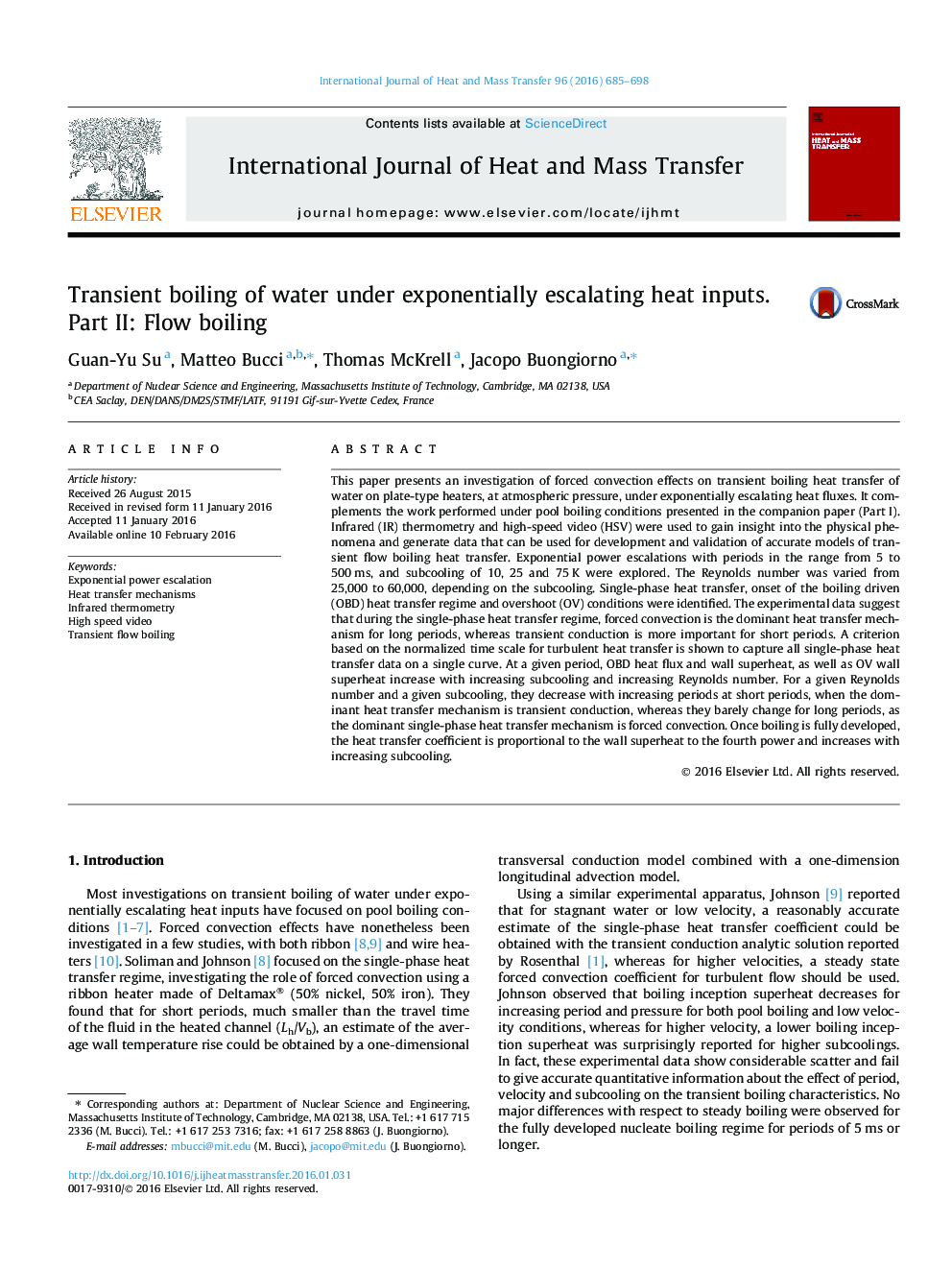| کد مقاله | کد نشریه | سال انتشار | مقاله انگلیسی | نسخه تمام متن |
|---|---|---|---|---|
| 7055932 | 1458046 | 2016 | 14 صفحه PDF | دانلود رایگان |
عنوان انگلیسی مقاله ISI
Transient boiling of water under exponentially escalating heat inputs. Part II: Flow boiling
ترجمه فارسی عنوان
جوش گذار طولانی در جریان ورودی های گرما به شدت افزایش یافته است. قسمت دوم: جریان جوش
دانلود مقاله + سفارش ترجمه
دانلود مقاله ISI انگلیسی
رایگان برای ایرانیان
کلمات کلیدی
افزایش قدرت نمایشی، مکانیزم انتقال حرارت، ترمومتر مادون قرمز، ویدیو با سرعت بالا جریان جاری جوش،
موضوعات مرتبط
مهندسی و علوم پایه
مهندسی شیمی
جریان سیال و فرایندهای انتقال
چکیده انگلیسی
This paper presents an investigation of forced convection effects on transient boiling heat transfer of water on plate-type heaters, at atmospheric pressure, under exponentially escalating heat fluxes. It complements the work performed under pool boiling conditions presented in the companion paper (Part I). Infrared (IR) thermometry and high-speed video (HSV) were used to gain insight into the physical phenomena and generate data that can be used for development and validation of accurate models of transient flow boiling heat transfer. Exponential power escalations with periods in the range from 5 to 500Â ms, and subcooling of 10, 25 and 75Â K were explored. The Reynolds number was varied from 25,000 to 60,000, depending on the subcooling. Single-phase heat transfer, onset of the boiling driven (OBD) heat transfer regime and overshoot (OV) conditions were identified. The experimental data suggest that during the single-phase heat transfer regime, forced convection is the dominant heat transfer mechanism for long periods, whereas transient conduction is more important for short periods. A criterion based on the normalized time scale for turbulent heat transfer is shown to capture all single-phase heat transfer data on a single curve. At a given period, OBD heat flux and wall superheat, as well as OV wall superheat increase with increasing subcooling and increasing Reynolds number. For a given Reynolds number and a given subcooling, they decrease with increasing periods at short periods, when the dominant heat transfer mechanism is transient conduction, whereas they barely change for long periods, as the dominant single-phase heat transfer mechanism is forced convection. Once boiling is fully developed, the heat transfer coefficient is proportional to the wall superheat to the fourth power and increases with increasing subcooling.
ناشر
Database: Elsevier - ScienceDirect (ساینس دایرکت)
Journal: International Journal of Heat and Mass Transfer - Volume 96, May 2016, Pages 685-698
Journal: International Journal of Heat and Mass Transfer - Volume 96, May 2016, Pages 685-698
نویسندگان
Guan-Yu Su, Matteo Bucci, Thomas McKrell, Jacopo Buongiorno,
